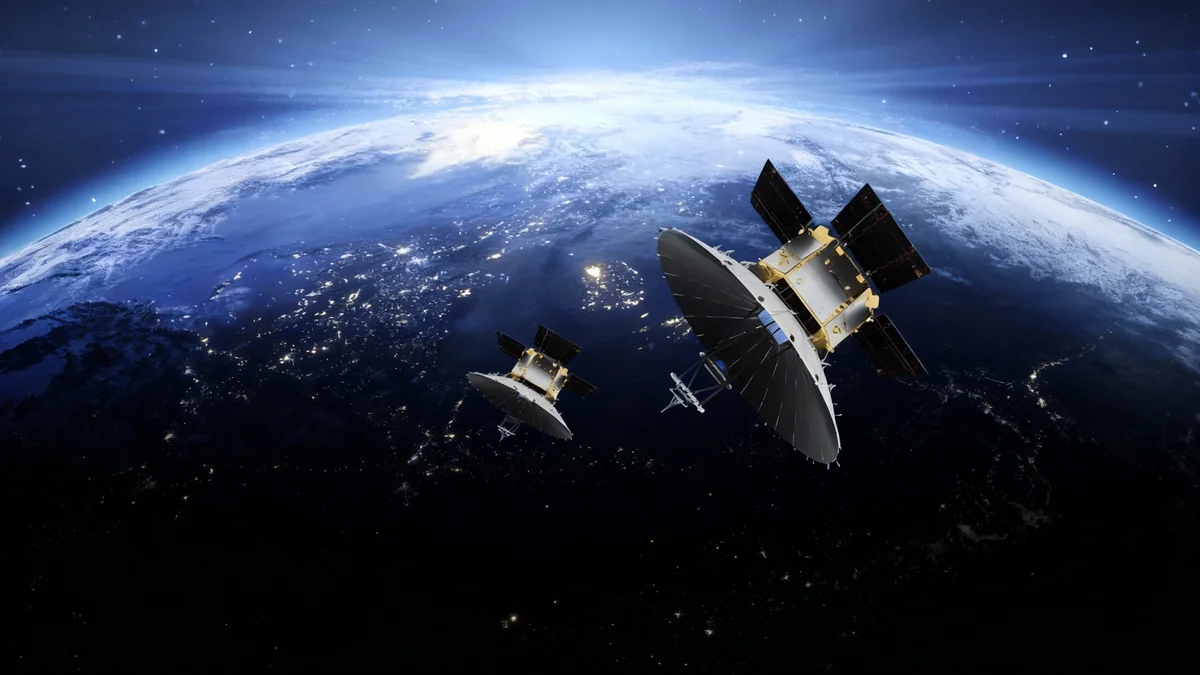South Korea has successfully placed the fourth and final satellite of its ambitious “425 Project” into orbit, completing a sophisticated surveillance constellation designed to enhance national security. The satellite was launched from Cape Canaveral, Florida, aboard a SpaceX Falcon 9 rocket, marking a significant milestone in the country's defense capabilities.
The completion of this four-satellite network provides South Korea with advanced, independent earth observation and surveillance assets. This new capability allows for more frequent and detailed monitoring of key strategic areas, operating in all weather conditions, day and night.
Key Takeaways
- South Korea's "425 Project" surveillance satellite constellation is now complete with the launch of its fourth satellite.
- The launch took place from Cape Canaveral, Florida, using a SpaceX Falcon 9 rocket.
- The constellation utilizes Synthetic Aperture Radar (SAR) technology for high-resolution, all-weather imaging.
- European aerospace firm Thales Alenia Space was a key partner, providing the advanced radar payload and control systems.
- This project strengthens South Korea's independent defense and intelligence-gathering capabilities.
A New Era in National Surveillance
The successful deployment of the fourth satellite finalizes the 425 Project, a multi-year effort led by South Korea's Agency for Defence and Development (ADD). The project aimed to establish a sovereign satellite system capable of high-performance observation and intelligence gathering. With the constellation now fully operational, South Korea gains a powerful tool for national security and defense monitoring.
The program involved extensive collaboration with international partners. Korean Aerospace Industries (KAI) and Hanwha Systems Corporation (HSC) worked closely with Thales Alenia Space, a joint venture between France's Thales and Italy's Leonardo. This partnership brought together domestic manufacturing prowess with leading-edge European satellite technology.
Giampiero Di Paolo, a senior executive at Thales Alenia Space, commented on the achievement.
"I am delighted with the successful launch of the fourth satellite part of the Korea 425 Project constellation, confirming Thales Alenia Space’s long-standing expertise in the design, development and manufacturing of Earth observation satellites. With a fourth satellite in orbit, the constellation is now complete."
Advanced Technology in Orbit
At the heart of each satellite is a high-performance Synthetic Aperture Radar (SAR) payload. This technology is crucial for modern surveillance as it can penetrate clouds, smoke, and darkness, providing clear imagery regardless of weather conditions or time of day. This gives the 425 Project a significant advantage over traditional optical satellites.
What is Synthetic Aperture Radar (SAR)?
SAR is a form of radar used to create two-dimensional images or three-dimensional reconstructions of objects, such as landscapes. It uses the motion of the radar antenna over a target region to provide finer spatial resolution than conventional beam-scanning radars. This allows it to 'see' through clouds and at night, making it ideal for surveillance.
The SAR system supplied by Thales Alenia Space features an innovative antenna design. It consists of a large deployable reflector made up of 24 individual petals that unfold once the satellite reaches its orbit. This large surface area, combined with an active feed array, allows the satellite to capture incredibly detailed images from space.
The 'Dancing Satellite'
Another key technological feature is the satellite's agility. An innovative Attitude and Orbit Control System, also provided by Thales Alenia Space, allows for rapid and precise repositioning. This enables the satellite to quickly shift its focus between different targets on the ground, a capability that has earned it the nickname of a “dancing satellite.”
This agility is critical for responsive surveillance, allowing operators to react to developing situations on the ground in near real-time. The combination of the powerful SAR and the nimble control system ensures the constellation can meet demanding intelligence-gathering requirements.
Strengthening International Partnerships
The 425 Project is the latest in a series of successful space collaborations between South Korea and its European partners. This long-standing relationship has produced several key assets for the country's space program.
South Korea's Space Program Milestones
The 425 Project builds on a history of successful satellite programs. Previous collaborations include the KOMPSAT-5 observation satellite, the Koreasat family of telecommunication satellites, and the GEO-KOMPSAT-2 meteorological and ocean monitoring satellite. More recently, the KASS satellite navigation system, which enhances GPS accuracy, entered operational service after being certified by national authorities.
These projects demonstrate a consistent strategy by South Korea to develop its space infrastructure through a combination of domestic development and international technology transfer. By working with established players like Thales Alenia Space, the country has accelerated its capabilities in critical areas like telecommunications, navigation, and now, defense surveillance.
The completion of the 425 constellation not only enhances South Korea's defense posture but also solidifies its position as a significant player in the global space community. The independent data provided by these satellites will inform strategic decisions for years to come, ensuring the nation has a clear and persistent view from above.





